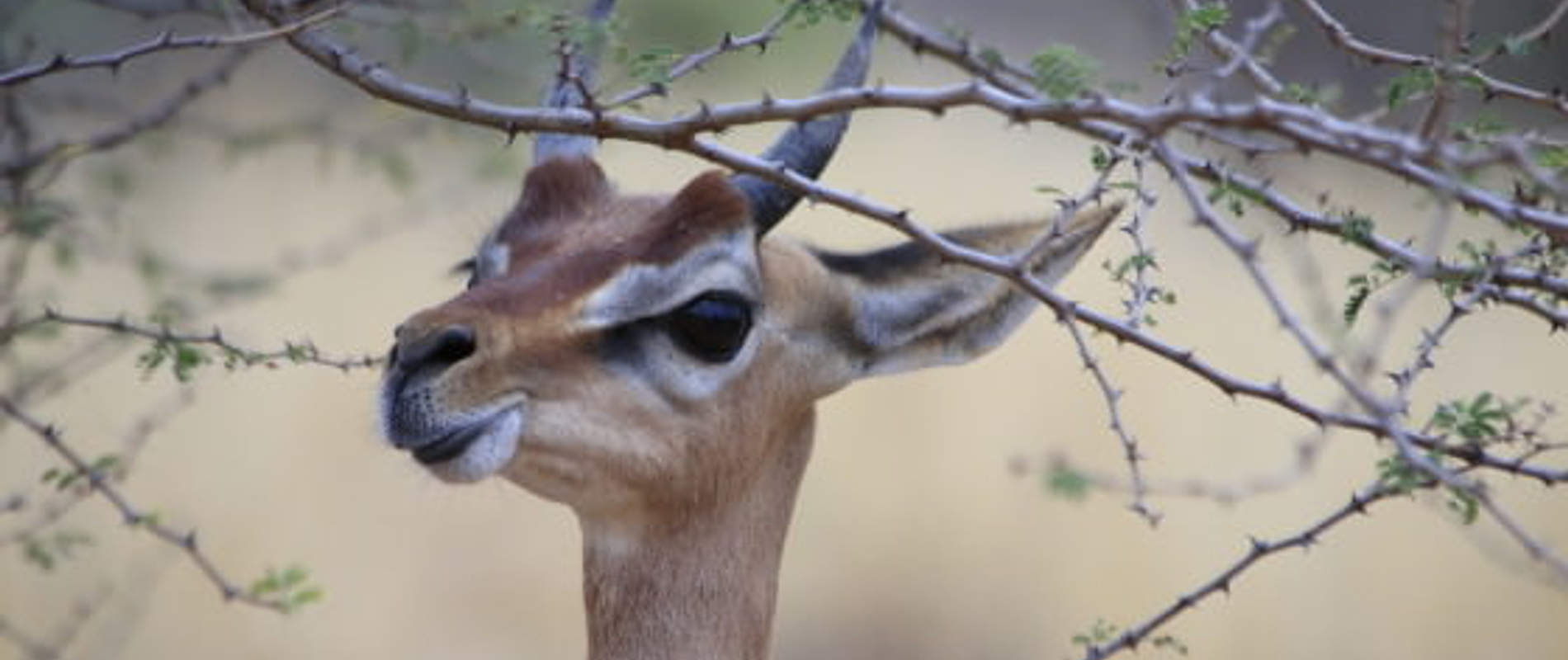What's the longest you have ever gone without water?
This unique-looking antelope, called a gerenuk can survive its entire life without ever taking a drink of water.

Instead, the gerenuk derives water from the foliage that it eats. To better reach this foliage it has evolved a long, slender neck upon which is perched a disproportionately small head. Its eyes and ears, however, are proportional to the rest of its body giving it a comical, somewhat alien appearance.

The gerenuk's large eyelashes and sensory hairs on its muzzle and ears allow it to carefully navigate through thorny bushes without getting scratched. In addition to having an extra long neck it is also able to stand on two legs and reach even further to the tops of shrubs and bushes. This is facilitated by stronger-than-normal lumbar vertebrae and powerful hind legs. This way they can reach tender shoots up to six and a half feet off the ground. The name Gerenuk is of Somali origin, meaning giraffe-necked. They are found in Somalia, but also in southern Djibouti and much of Kenya's arid North as well as throughout Tsavo in the East. Aerial surveys have shown that their densities are higher in drier areas and especially in areas further from permanent water sources. This way they reduce competition with other browsers that are more water-dependant.

Gerenuks conserve water with uniquely adapted nasal passages, which prevent evaporative loss. They also have very highly concentrated urine, and aside from short, quick bursts to escape predators they are very sedentary animals, preferring to stand in place or browse.

They are somewhat social, but prefer to stay in small groups. In Tsavo, they are commonly seen alone, but will often form groups of up to five individuals. The largest herd of gerenuks reported in Tsavo is twelve, but it is very rare to see more than five together. In more arid areas and in Somalia, however, larger groups are more common, with 2-8 being frequently reported and as many as 25-30 individuals aggregating when foliage is flush.

The David Sheldrick Wildlife Trust rescued an orphaned gerenuk named Nuk last year who has since rejoined the wild. He still comes to visit from time to time and in the mornings and evenings he is often sighted on the airstrip with a herd of impalas that he has taken a liking to. The Trust is holding on to hope that he will one day catch the scent of a wild female nearby and start a family of his own. There are indeed wild gerenuk nearby and it should be a matter of time before he finds a mate.


